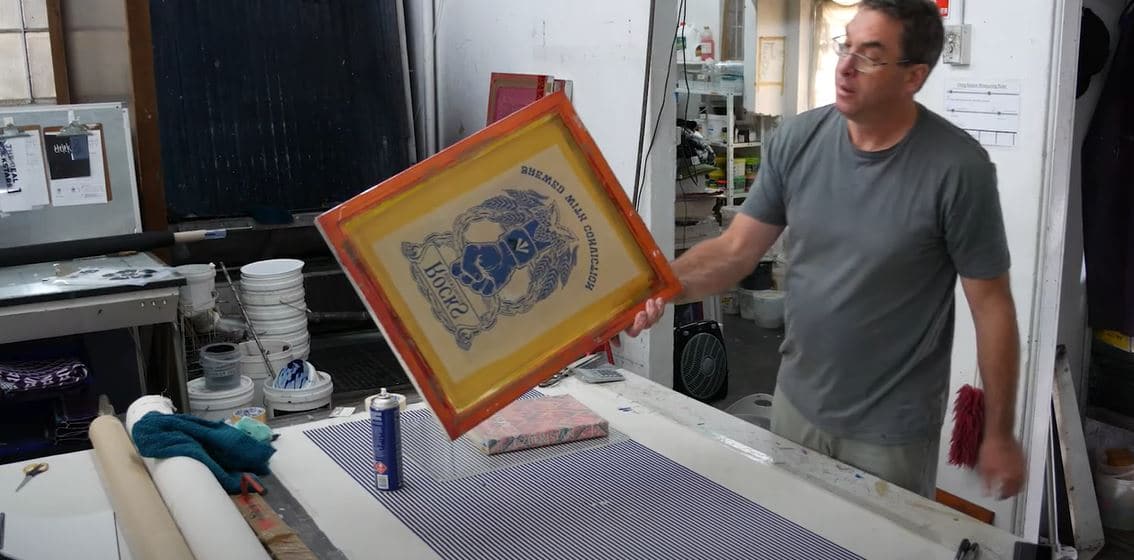ChatGPT said: What customers are saying in 10:9 Design reviews: real experiences
Wiki Article
The Vital Overview to Recognizing Screen Printing and Its Versatile Uses
Screen printing has an abundant history that dates back to old times, progressing right into an innovative technique used throughout various sectors today. This overview discovers the ins and outs of the screen printing process, outlining its applications in marketing, home, and style décor - 10:9 Design Texas. Comprehending these basics can open imaginative possibility for both imaginative and business projects. The following areas will certainly reveal necessary ideas and strategies to boost one's screen printing undertakingsThe History of Screen Printing
Although screen printing has origins that trace back centuries, its advancement reflects the artistic and technological improvements of various cultures. Coming from ancient China, the method was originally utilized for decorating textiles and later spread to Japan, where it ended up being important to Ukiyo-e woodblock printing. The method changed to Europe in the 18th century, where it obtained popularity among craftsmens and industrial printers. The development of picture emulsion in the 20th century revolutionized screen printing, allowing for even more intricate styles and better performance. Artists like Andy Warhol better moved its popularity, using the medium to create legendary works that blended commercialism and great art. By the late 20th century, screen printing had actually established itself as a versatile method, utilized in vogue, advertising, and great art. Today, it proceeds to evolve, incorporating digital modern technology and broadening its applications throughout numerous markets.The Screen Printing Process Explained
Screen printing transforms creative visions into substantial styles via a collection of precise actions. Originally, a picture is created and after that moved onto a screen, usually made of great mesh textile extended over a frame. A light-sensitive emulsion is put on the screen, which is exposed to light, hardening in locations not covered by the image. After washing out the unhardened emulsion, a stencil is created.Next, the screen is positioned over the substrate, whether it be material, paper, or an additional product. Ink is then pushed with the open locations of the pattern making use of a squeegee, transferring the layout onto the substrate below. This process can be duplicated for numerous shades, needing separate displays for every hue. The published thing is cured making use of heat to ensure the ink sticks properly, resulting in a long lasting, dynamic style prepared for use.
Kinds Of Screen Printing Techniques

Additionally, specialized methods, such as discharge screen printing, eliminate color from the fabric to develop softer prints, while aluminum foil screen printing applies metal aluminum foil to achieve a shiny surface (10:9 Design Company). Each my response technique supplies distinct features, accommodating different imaginative requirements and manufacturing ranges, inevitably broadening the opportunities within the screen printing domain name
Applications of Screen Printing in Numerous Industries

Additionally, the signs and advertising sectors make use of screen printing for developing attractive screens and banners. This technique permits bold shades and elaborate styles that catch attention. In electronics, screen printing is used for using conductive inks to circuit boards, vital try this out for part connections. The home style market welcomes screen printing to create distinct layouts on fabrics and wall surface art. In general, screen printing works as a critical tool throughout diverse fields, improving items with individualized and visually appealing graphics.
Tips for Successful Screen Printing Projects
While taking on a screen printing job, careful attention to information can considerably boost the last result. Selecting high-grade products is vital; this consists of the screen, inks, and substrates. Utilizing proper mesh counts can affect ink deposition and information resolution. Prep work is just as vital; thorough cleaning of displays and appropriate direct exposure times guarantee crisp prints.Next, exact registration is critical for multi-color prints. Making use of alignment devices can aid achieve exact layering. Furthermore, screening prints on scrap materials before manufacturing helps identify potential concerns without wasting sources.

Often Asked Questions
What Materials Are Ideal for Screen Printing on Fabric?
Cotton and polyester blends are excellent for screen printing on fabric due to their durability and ink absorption. Furthermore, specialized textiles like silk or canvas can create unique structures and finishes, enhancing the general design quality.How Do I Tidy and Maintain Screen Printing Tools?
To clean up and maintain screen printing devices, one must regularly wash screens with suitable solvents, check mops for wear, lubricate relocating components, and store all products in a completely dry, dust-free atmosphere to lengthen their life-span.What Are the Ecological Effects of Screen Printing?
Screen printing can have significant environmental effects, consisting of chemical waste from solvents and inks, water use during cleansing processes, and power intake. Sustainable methods and environment-friendly products are crucial for lessening these negative impacts.Can Screen Printing Be Done at Home Effectively?
Screen printing can be properly done at home with the appropriate materials and techniques. Hobbyists can create top quality prints, though success depends upon their ability level, tools, and understanding of the procedure included.
What Are the Expenses Associated With Starting a Display Printing Business?

Beginning a screen printing business includes expenses for equipment, products, and work area. Preliminary expenses generally vary from a few hundred to several thousand bucks, relying on the scale, quality of equipment, and desired manufacturing capacity.
Screen printing has an abundant background that dates back to old times, progressing right into a sophisticated technique used across various industries today. An additional technique, rotating screen printing, employs cylindrical screens, promoting continual printing on material rolls, consequently enhancing performance for large-scale manufacturings. Additionally, specialty methods, such as discharge screen printing, get rid of dye from the material to create softer prints, while foil screen printing applies metallic aluminum foil to attain a glossy surface. In the style field, screen printing is commonly made use of to produce dynamic styles on clothing, enabling brands to display their special designs. Cotton and polyester blends are suitable for screen printing on material due to their sturdiness and ink absorption.
Report this wiki page